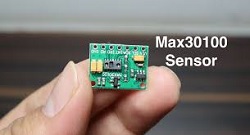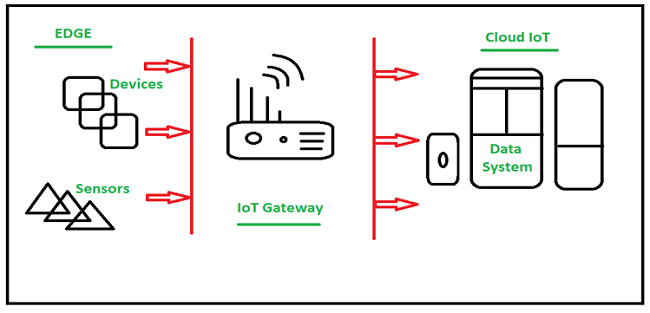Home »
IoT (Internet of Things) Tutorial
IoT Ecosystem
IoT Ecosystem: In this tutorial, we will learn about the IoT Ecosystem - What is it and What are Its Key Elements?
By Shahnail Khan Last updated : August 14, 2023
The Internet of Things (IoT) ecosystem is a massive network of interconnected gadgets and technology that serves specific purposes, such as building smart cities, weather monitoring, etc. This ecosystem consists of different fundamental components, each essential for IoT operation. These building blocks include-
1. Sensors & Actuators

The fundamental components of Internet of Things (IoT) devices, sometimes referred to as "Things" are sensors and actuators. Sensors collect data from their surroundings, whether in real-time, automatically, or in response to a user's command. Actuators, on the other hand, use the data they receive to take specified action. Since each of these gadgets has a unique IP address, a network can quickly identify them. For example, an Ultrasonic sensor is used to measure distance, and MAX30100 is an integrated sensor designed for pulse oximetry, etc.
2. Processors

They serve as the 'brain' of the ecosystem. Processors or microcontrollers are used to process the data gathered by sensors, extracting valuable insights from raw data. They are critical in analysing and making decisions based on the data collected. Processors are also responsible for data security, performing encryption and decryption. Examples include Arduino, Raspberry Pi, ETA Compute, etc.
3. Gateways

In the context of the Internet of Things, a gateway plays a role in analysing information from linked sensors. Its primary functions include not only assessing the data but also making sure it reaches the correct location for efficient use. Gateways, which serve as decision points, provide precise control commands to actuators, instructing them to carry out relevant operations. Additionally, gateways enable two-way data transmission, supplying vital network access for IoT equipment.
Examples of gateways are LAN, WLAN, PAN, etc.
4. Applications
Applications are a crucial part of the IoT system. Consider them as software that enables us to interpret all the data gathered from sensors and gadgets. These applications are often saved and run in the cloud, making them accessible from anywhere. Applications organize the data and show it to us in a way that's easy to grasp, like on a smartphone or computer screen. Applications are operated by users only. They serve as the primary interface we use to communicate with our IoT devices. For instance, if you have a home automation app, you may use it to operate your thermostat, security cameras, and lighting.
5. Data Storage
Data is often saved in a computer database after it has arrived at its destination, which may be local or cloud-based. These databases store sensor data and make it available to other systems and applications. Data storage is an essential component for analyzing data and storing it for future reference.
In conclusion, the IoT ecosystem depends on these five fundamental building blocks—sensors, processors, gateways, applications, and data storage—to gather, process, analyse, and use data from connected devices to achieve specific objectives, such as the smart city development and various other IoT applications.
Advertisement
Advertisement